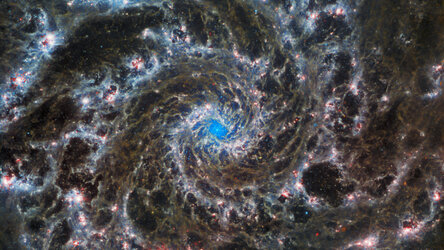Accept all cookies Accept only essential cookies See our Cookie Notice

About ESA
The European Space Agency (ESA) is Europe’s gateway to space. Its mission is to shape the development of Europe’s space capability and ensure that investment in space continues to deliver benefits to the citizens of Europe and the world.
Highlights
ESA - United space in Europe
This is ESA ESA facts Member States & Cooperating States Funding Director General Top management For Member State Delegations European vision European Space Policy ESA & EU Space Councils Responsibility & Sustainability Annual Report Calendar of meetings Corporate newsEstablishments & sites
ESA Headquarters ESA ESTEC ESA ESOC ESA ESRIN ESA EAC ESA ESAC Europe's Spaceport ESA ESEC ESA ECSAT Brussels Office Washington OfficeWorking with ESA
Business with ESA ESA Commercialisation Gateway Law at ESA Careers Cyber resilience at ESA IT at ESA Newsroom Partnerships Merchandising Licence Education Open Space Innovation Platform Integrity and Reporting Administrative Tribunal Health and SafetyMore about ESA
History ESA Historical Archives Exhibitions Publications Art & Culture ESA Merchandise Kids Diversity ESA Brand Centre ESA ChampionsLatest
Space in Member States
Find out more about space activities in our 23 Member States, and understand how ESA works together with their national agencies, institutions and organisations.
Science & Exploration
Exploring our Solar System and unlocking the secrets of the Universe
Go to topicAstronauts
Missions
Juice Euclid Webb Solar Orbiter BepiColombo Gaia ExoMars Cheops Exoplanet missions More missionsActivities
International Space Station Orion service module Gateway Concordia Caves & Pangaea BenefitsLatest
Space Safety
Protecting life and infrastructure on Earth and in orbit
Go to topicAsteroids
Asteroids and Planetary Defence Asteroid danger explained Flyeye telescope: asteroid detection Hera mission: asteroid deflection Near-Earth Object Coordination CentreSpace junk
About space debris Space debris by the numbers Space Environment Report In space refuelling, refurbishing and removingSafety from space
Clean Space ecodesign Zero Debris Technologies Space for Earth Supporting Sustainable DevelopmentApplications
Using space to benefit citizens and meet future challenges on Earth
Go to topicObserving the Earth
Observing the Earth Future EO Copernicus Meteorology Space for our climate Satellite missionsCommercialisation
ESA Commercialisation Gateway Open Space Innovation Platform Business Incubation ESA Space SolutionsLatest
Enabling & Support
Making space accessible and developing the technologies for the future
Go to topicBuilding missions
Space Engineering and Technology Test centre Laboratories Concurrent Design Facility Preparing for the future Shaping the Future Discovery and Preparation Advanced Concepts TeamSpace transportation
Space Transportation Ariane Vega Space Rider Future space transportation Boost! Europe's Spaceport Launches from Europe's Spaceport from 2012Latest

Webb peers behind near-infrared bars
Thank you for liking
You have already liked this page, you can only like it once!
A delicate tracery of dust and bright star clusters threads across this image from the NASA/ESA/CSA James Webb Space Telescope. This view from Webb’s NIRCam instrument is studded by the galaxy’s massive population of stars, most dense along its bright central bar, along with burning red clouds of gas illuminated by young stars within. These glittering stars belong to the barred spiral galaxy NGC 5068, located around 17 million light-years from Earth in the constellation Virgo.
This portrait of NGC 5068 is part of a campaign to create an astronomical treasure trove, a repository of observations of star formation in nearby galaxies. Previous gems from this collection can be seen here and here. These observations are particularly valuable to astronomers for two reasons. The first is because star formation underpins so many fields in astronomy, from the physics of the tenuous plasma that lies between stars to the evolution of entire galaxies. By observing the formation of stars in nearby galaxies, astronomers hope to kick-start major scientific advances with some of the first available data from Webb.
The second reason is that Webb’s observations build on other studies using telescopes including the NASA/ESA Hubble Space Telescope and some of the world’s most capable ground-based observatories. Webb collected images of 19 nearby star-forming galaxies which astronomers could then combine with catalogues from Hubble of 10 000 star clusters, spectroscopic mapping of 20 000 star-forming emission nebulae from the Very Large Telescope (VLT), and observations of 12 000 dark, dense molecular clouds identified by the Atacama Large Millimeter/submillimeter Array (ALMA). These observations span the electromagnetic spectrum and give astronomers an unprecedented opportunity to piece together the minutiae of star formation.
This near-infrared image of the galaxy is filled by the enormous gathering of older stars which make up the core of NGC 5068. The keen vision of NIRCam allows astronomers to peer through the galaxy’s gas and dust to closely examine its stars. Dense and bright clouds of dust lie along the path of the spiral arms: these are H II regions, collections of hydrogen gas where new stars are forming. The young, energetic stars ionise the hydrogen around them which, when combined with hot dust emission, creates this reddish glow. H II regions form a fascinating target for astronomers, and Webb’s instruments are the perfect tools to examine them, resulting in this image.
[Image Description: A close-in image of a spiral galaxy, showing its core and part of a spiral arm. At this distance thousands upon thousands of tiny stars that make up the galaxy can be seen. The stars are most dense in a whitish bar that forms the core, and less dense out from that towards the arm. Bright red gas clouds follow the twist of the galaxy and the spiral arm.]
-
CREDIT
ESA/Webb, NASA & CSA, J. Lee and the PHANGS-JWST Team -
LICENCE
CC BY 4.0 INT or ESA Standard Licence
(content can be used under either licence)

Webb peers behind bars

Webb peers behind mid-infrared bars

Heart of the Phantom Galaxy

A spiral amongst thousands















 Germany
Germany
 Austria
Austria
 Belgium
Belgium
 Denmark
Denmark
 Spain
Spain
 Estonia
Estonia
 Finland
Finland
 France
France
 Greece
Greece
 Hungary
Hungary
 Ireland
Ireland
 Italy
Italy
 Luxembourg
Luxembourg
 Norway
Norway
 The Netherlands
The Netherlands
 Poland
Poland
 Portugal
Portugal
 Czechia
Czechia
 Romania
Romania
 United Kingdom
United Kingdom
 Slovenia
Slovenia
 Sweden
Sweden
 Switzerland
Switzerland
























